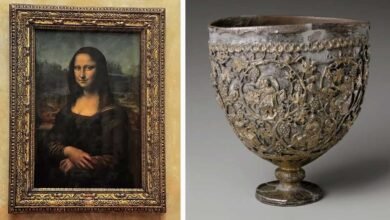
The House of Draculesti: A Tale of Blood and Power
In the heart of Transylvania, a dynasty was born that would leave an indelible mark on history—the Draculesti, a lineage intertwined with violence, power, and the enigmatic figure of Vlad the Impaler. This brutal ruler, believed to be the inspiration for Bram Stoker’s legendary vampire, Dracula, emerged from the annals of medieval Europe to carve a chilling legacy in the land of Sighisoara, Transylvania, which we now know as Romania.

Vlad III Dracula/Vlad the Impaler. Voivode of Wallachia.
Wikipedia Public Domain
The Origins of a Dark Dynasty
Vlad III, known as Vlad the Impaler, was the second son of Vlad II Dracul and Eupraxia of Moldavia. The “Dracul” in their name signified their membership in the Order of the Dragon, an order dedicated to defending Christianity against the Ottoman Empire’s advance. The term “drac” took on a sinister meaning in modern Romanian, translating to “devil.”
In a violent and tumultuous era, Transylvania and its neighboring regions became the battleground between European powers and the Ottoman Empire, struggling for supremacy and religious dominance.

The locations of Transylvania, Wallachia and the Ottoman Empire.
Anonimu/Wikipedia Cc3.0
A Hostage of Fate: Vlad’s Sojourn in the Ottoman Court
Vlad’s fate took a chilling turn when, in 1442, he and his younger brother Radu were taken to the Ottoman court by their father. Sultan Murad II held them captive, utilizing them as leverage to ensure Vlad II Dracul’s allegiance. For nearly six years, the young princes were subjected to a life of captivity, education, and torture. It was during this time that Vlad witnessed the ghastly sight of impaled bodies—a gruesome spectacle that would later become his infamous trademark.
Rise to Power and the Reign of Terror
After returning to Wallachia, Vlad III Dracula sought to claim his birthright as Voivode. However, his ascent was marred by opposition from his younger brother Radu, the boyars, and the Ottomans. After a tumultuous rule and eventual dethronement, Vlad waged a fierce struggle to regain control, marked by his merciless tactics and brutal reputation. Impalement, his signature method of execution, plunged victims into agonizing deaths, their bodies displayed as macabre warnings.
Vlad’s reign, although characterized by his efforts to restore order, was a harrowing era of carnage, with over 80,000 people falling victim to his barbarity—men, women, children, soldiers, and nobles alike.

Ottoman Sultan Mehmed II. Vlad III Dracula’s primary enemy.
Wikipedia Public Domain
The End of Vlad’s Dark Reign
Vlad’s tumultuous rule came to a violent end in 1476, as he fell in battle near Bucharest. His beheaded head was sent to Sultan Mehmed II as a grisly trophy, marking the conclusion of his brutal saga.

A 1499 woodcut of Vlad the Impaler dining among the impaled corpses on a battlefield.
Wikipedia Public Domain
While his achievements and leadership may be remembered by some, Vlad the Impaler’s legacy will forever be synonymous with his ruthless cruelty and horrifying methods of execution. The House of Draculesti, a lineage steeped in blood and power, left an enduring mark on history, weaving a tale of darkness and terror that continues to captivate and horrify generations to this day.

Actor Bela Lugosi was one of the first to portray Dracula in 1931.
Wikipedia Public Domain




